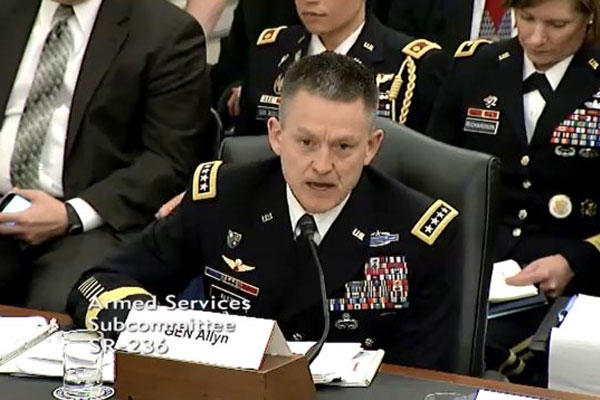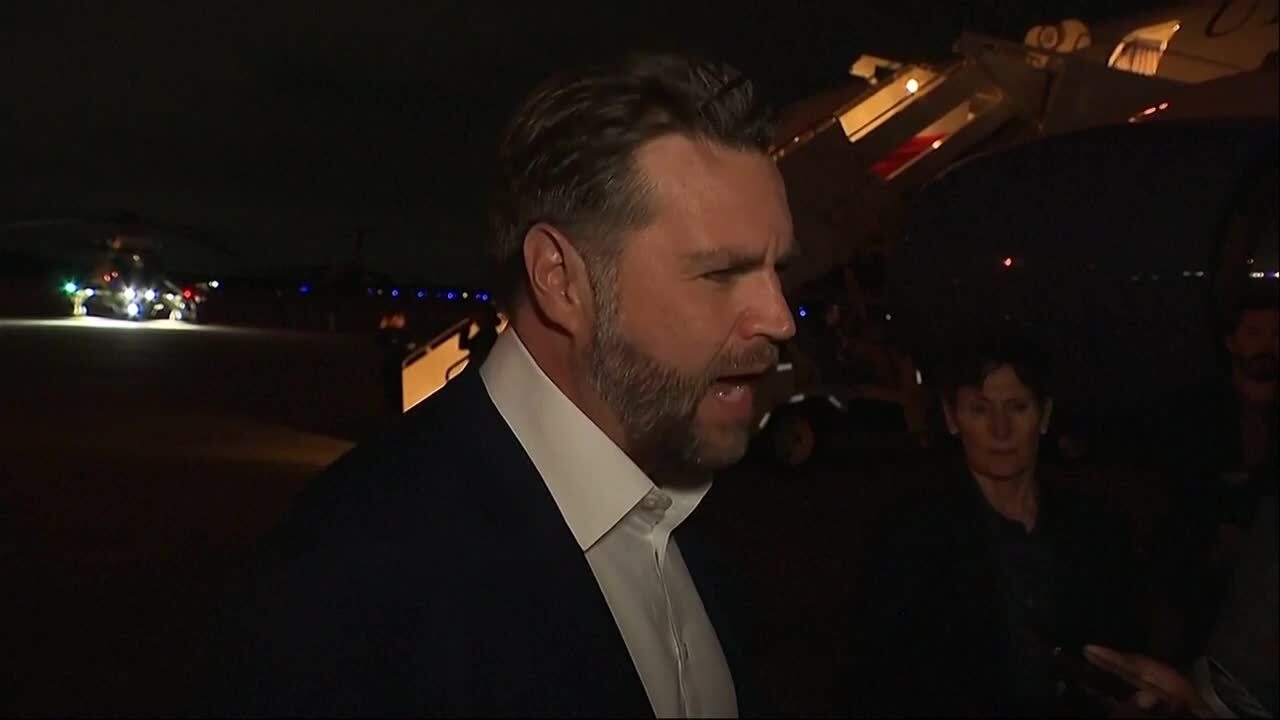WASHINGTON -- Dropping the Army's end strength to 450,000 would require the involuntary separation of about 14,000 Soldiers, the Army's vice chief of staff told lawmakers.
Gen. Daniel B. Allyn testified March 25 before the Senate Armed Services subcommittee on readiness. He warned that sequestration would have a detrimental effect on the force.
"It will increase significantly the involuntary separation of officer and non-commissioned [NCO] leaders who have steadfastly served their country through the last 13 years of war," Allyn said.
"Sequestration will undermine readiness, ultimately putting Soldiers' lives and our mission success at risk," he said.
It would require the involuntary separation of about 2,000 Soldiers per year -- both officers and NCOs, Allyn said. In fiscal year 2014, the Army was forced to involuntarily separate about 2,100 Soldiers. Just more than 50 percent of those Soldiers had served two or more combat tours, he said.
"These are Soldiers who answered the call, multiple times, to meet the requirements that the nation had," Allyn said.
Separating those Soldiers was not a choice the Army wanted to make, he said. "This is a budget-driven requirement," he said.
"Treating those veterans of multiple combat tours with dignity and respect is our absolute number 1 commitment," Allyn said.
"Our objective in notifying people who were forward-deployed was to give them the maximum amount of time possible to prepare," he said. The goal was to allow them a minimum of 10 months to prepare for employment.
FY16 BUDGET
The budget request for next year is $5.1 billion less than what the Army had for FY14, Allyn said.
"We are funded to achieve just enough readiness for immediate consumption, but are unable to generate the readiness required to respond to an unknown contingency," he said.
Units have been forced to cut back on home-station training, due to lack of funding, Allyn said. As a result, units are now expected to arrive at combat training centers not fully ready.
Sequestration in FY16 would further impact the Army's ability to maintain installation readiness and protect the industrial base, he said.
"Sequestration will degrade the industrial base's ability to sustain the lifecycle readiness of warfighting equipment while also maintaining the ability to surge to meet future demands," he said.
For the Army to achieve its required readiness level in FY16, it must be allowed to initiate compensation reform, base realignment and closure, and the Aviation Restructuring Initiative, Allyn told the senators.
The Aviation Restructuring Initiative will eliminate 700 aircraft from active force and 111 from the reserve components, Allyn said, and it will save $12 billion.
AFGHANISTAN
The Army's vice chief of staff visited Afghanistan in February, he told senators. In Kandahar, he visited Regional Command-South and in Bagram, the 3rd Infantry Division in RC-East.
At that time, the commands were preparing to draw down their numbers to meet required end-strength. That was before President Barack Obama March 24 that 9,800 U.S. troops would remain in Afghanistan until at least the end of the year.
To meet the drawdown requirement, Allyn said the ratio of Soldiers to contractors had been decreased to a "razor's edge of risk," in Afghanistan.
"We had contractors doing that which Soldiers need to do to assure the security of our forces," Allyn said.
Afghan forces also still rely on U.S. assistance when it comes to aviation and close air support, Allyn said. Those are capabilities not yet developed sufficiently by the Afghan forces. Afghan forces also continue to need help building up their sustainment capability as well, he said.




























